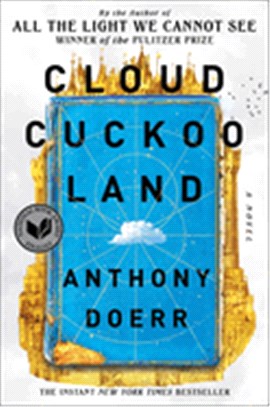Dance Therapy: Dancing Through Transformation: Using Dance Therapy to Commence a Healing Journey
商品資訊
ISBN13:9798874321284
出版社:Independently published
作者:Gatlin Ares
出版日:2024/01/07
裝訂:平裝
規格:20.3cm*12.7cm*0.4cm (高/寬/厚)
商品簡介
相關商品
商品簡介
Dance therapy, alternatively referred to as dance/movement therapy (DMT), is an expressive therapy modality that fosters the individual's emotional, social, cognitive, and physical integration through the utilization of dance and movement. Its premise is that the mind and body are interconnected and that movement can serve as a potent therapeutic and self-expression tool.
Dance therapists assist individuals or groups in exploring and addressing a variety of psychological, physical, and emotional issues through the use of diverse movement and dance techniques.
The primary objectives of dance therapy are to augment holistic welfare, elevate self-worth, cultivate self-consciousness, and offer an artistic platform for people to manifest their emotions.
Key dance therapy principles and techniques include the following:
- Expression of Movement: Movement is regarded as a non-verbal mode of communication that enables people to convey sentiments and personal encounters that might be challenging to describe verbally.
- Physical Awareness: Dance therapy promotes an increased sense of self-awareness regarding one's body, bodily sensations, and physical encounters. An increased level of consciousness may facilitate a more comprehensive comprehension of emotions and actions.
- The Integration of Mind and Body: Dance therapy endeavors to reconcile the physical and mental dimensions, assisting participants in establishing a harmonious equilibrium and correlation between their thoughts and corporeal sensations.
- Encouragement of Creative Exploration: Participants are motivated to delve into their creative faculties by means of dance and movement, which ultimately results in enhanced self-awareness and a more profound sense of self.
- Establishment of a Therapeutic Relationship: Dance therapists foster a secure and encouraging setting for clients to engage in self-exploration and self-expression by establishing a therapeutic relationship.
Dance therapy finds application in a multitude of contexts, encompassing community programs, mental health clinics, hospitals, schools, and rehabilitation centers. A variety of mental health issues, including anxiety, depression, trauma, food disorders, and others, may find it beneficial to address.
It is crucial to acknowledge that dance therapy is generally administered by certified dance/movement therapists who possess dual training in psychotherapy and dance.
The particular methodologies and strategies employed may differ in accordance with the theoretical stance of the clinician and the requirements of the group or individual.
Dance therapists assist individuals or groups in exploring and addressing a variety of psychological, physical, and emotional issues through the use of diverse movement and dance techniques.
The primary objectives of dance therapy are to augment holistic welfare, elevate self-worth, cultivate self-consciousness, and offer an artistic platform for people to manifest their emotions.
Key dance therapy principles and techniques include the following:
- Expression of Movement: Movement is regarded as a non-verbal mode of communication that enables people to convey sentiments and personal encounters that might be challenging to describe verbally.
- Physical Awareness: Dance therapy promotes an increased sense of self-awareness regarding one's body, bodily sensations, and physical encounters. An increased level of consciousness may facilitate a more comprehensive comprehension of emotions and actions.
- The Integration of Mind and Body: Dance therapy endeavors to reconcile the physical and mental dimensions, assisting participants in establishing a harmonious equilibrium and correlation between their thoughts and corporeal sensations.
- Encouragement of Creative Exploration: Participants are motivated to delve into their creative faculties by means of dance and movement, which ultimately results in enhanced self-awareness and a more profound sense of self.
- Establishment of a Therapeutic Relationship: Dance therapists foster a secure and encouraging setting for clients to engage in self-exploration and self-expression by establishing a therapeutic relationship.
Dance therapy finds application in a multitude of contexts, encompassing community programs, mental health clinics, hospitals, schools, and rehabilitation centers. A variety of mental health issues, including anxiety, depression, trauma, food disorders, and others, may find it beneficial to address.
It is crucial to acknowledge that dance therapy is generally administered by certified dance/movement therapists who possess dual training in psychotherapy and dance.
The particular methodologies and strategies employed may differ in accordance with the theoretical stance of the clinician and the requirements of the group or individual.
主題書展
更多
主題書展
更多書展今日66折
您曾經瀏覽過的商品
購物須知
外文書商品之書封,為出版社提供之樣本。實際出貨商品,以出版社所提供之現有版本為主。部份書籍,因出版社供應狀況特殊,匯率將依實際狀況做調整。
無庫存之商品,在您完成訂單程序之後,將以空運的方式為你下單調貨。為了縮短等待的時間,建議您將外文書與其他商品分開下單,以獲得最快的取貨速度,平均調貨時間為1~2個月。
為了保護您的權益,「三民網路書店」提供會員七日商品鑑賞期(收到商品為起始日)。
若要辦理退貨,請在商品鑑賞期內寄回,且商品必須是全新狀態與完整包裝(商品、附件、發票、隨貨贈品等)否則恕不接受退貨。
























